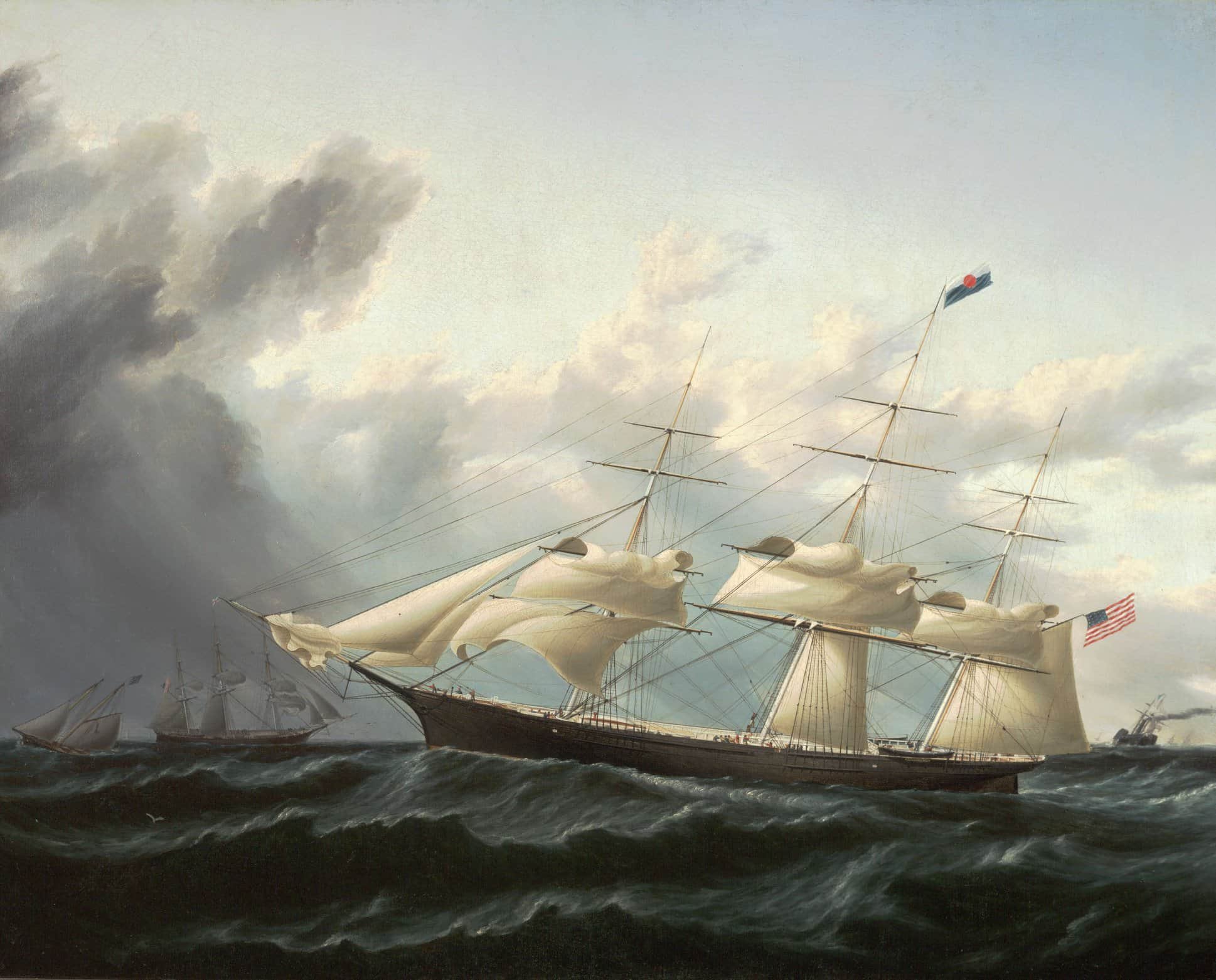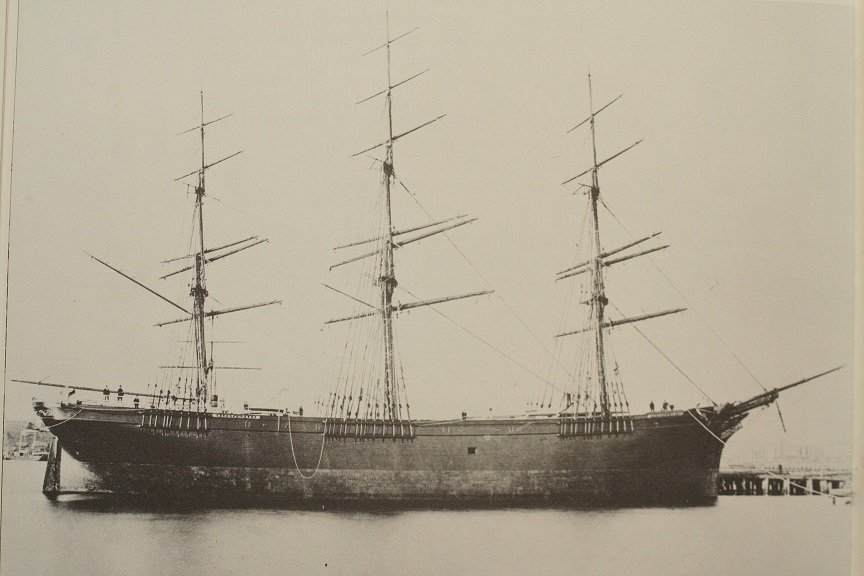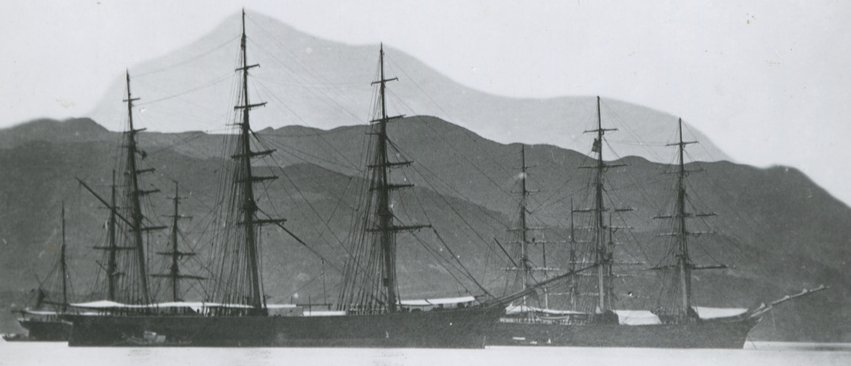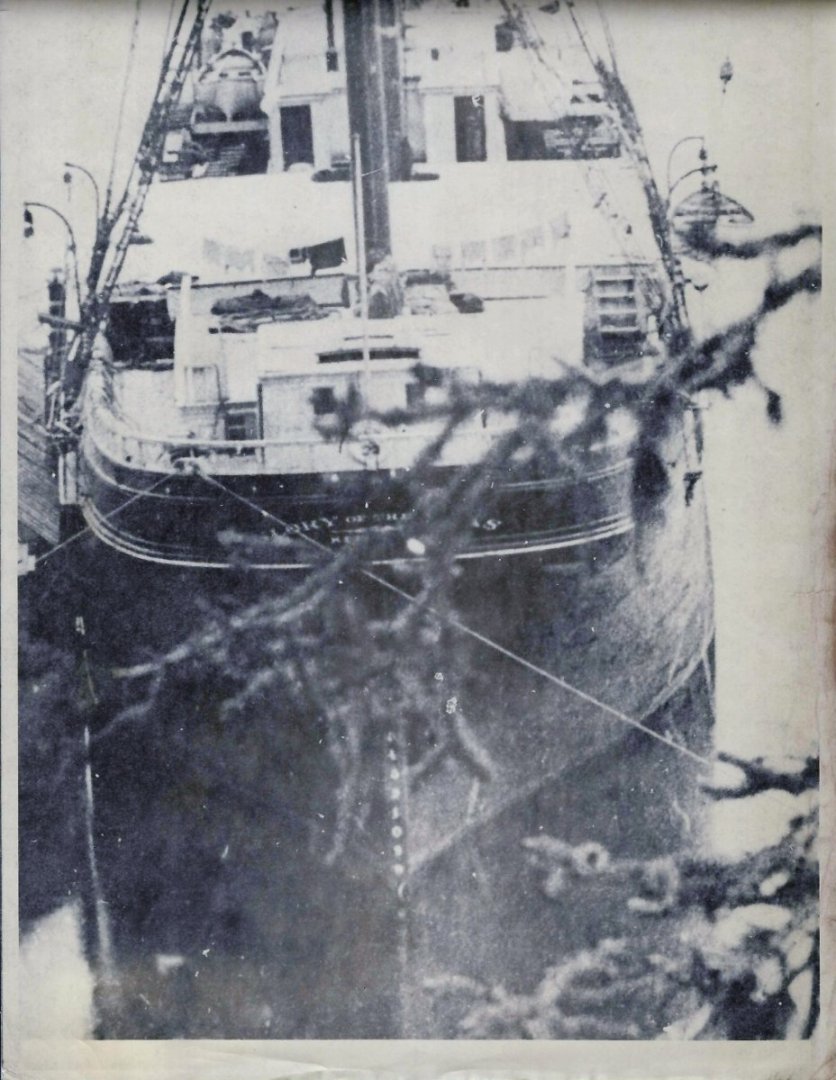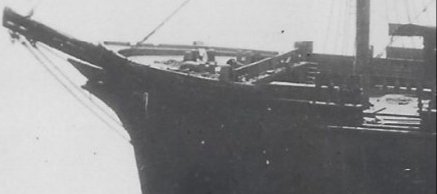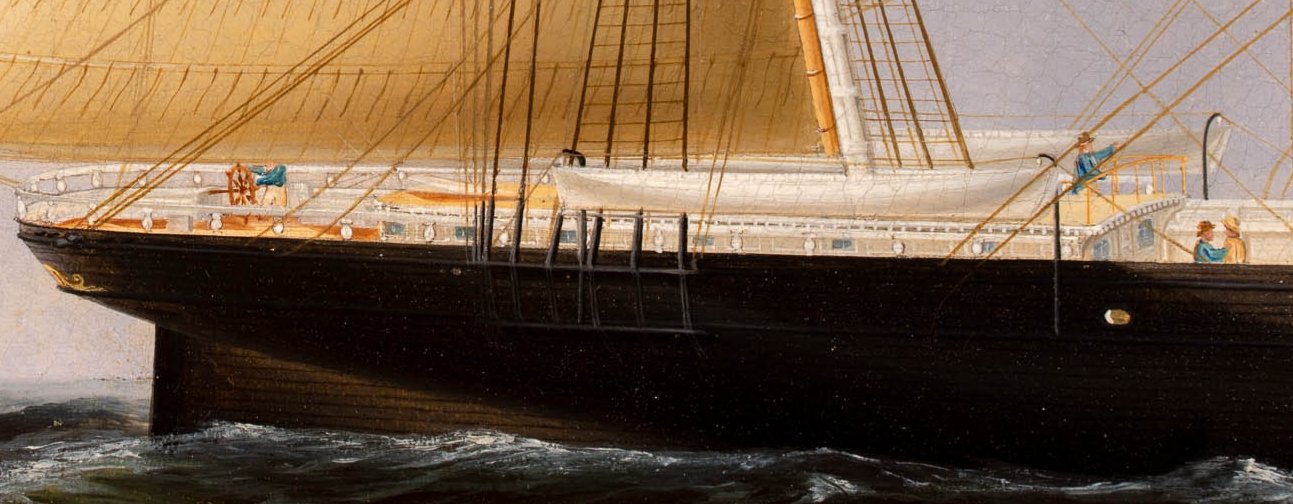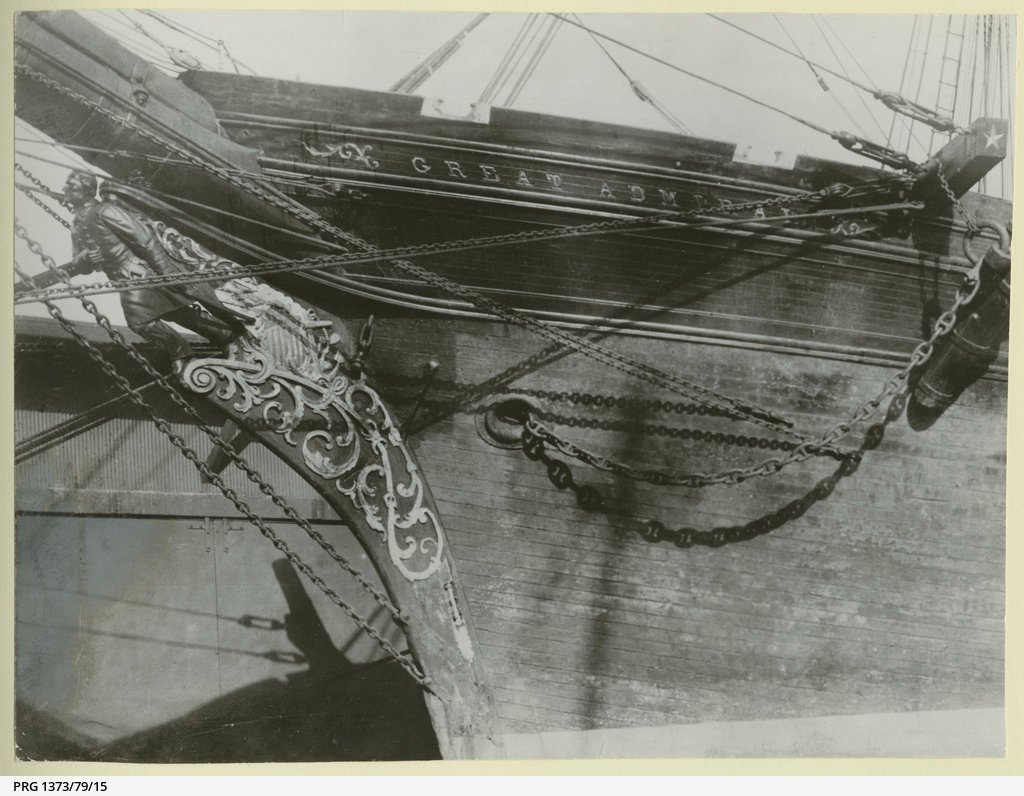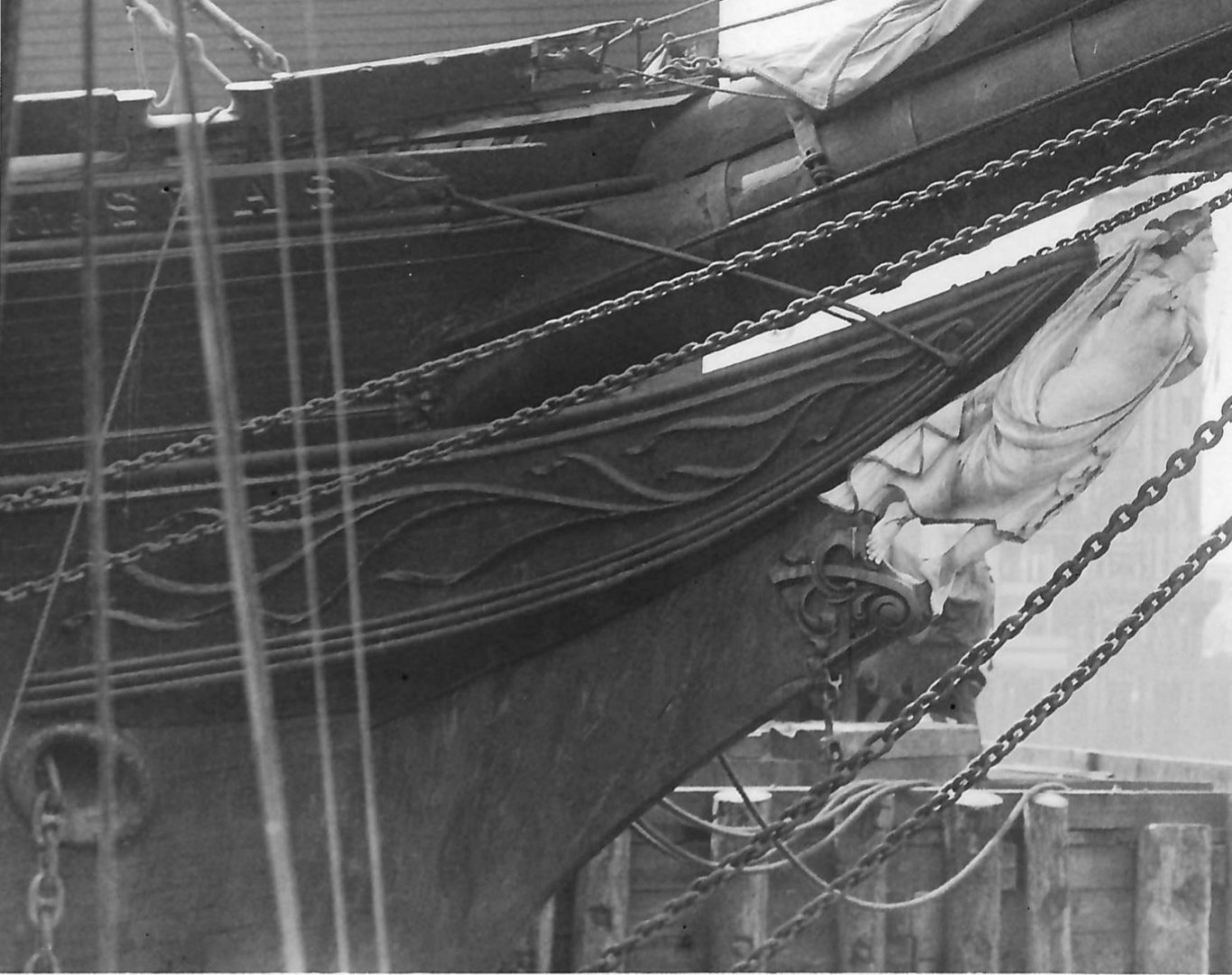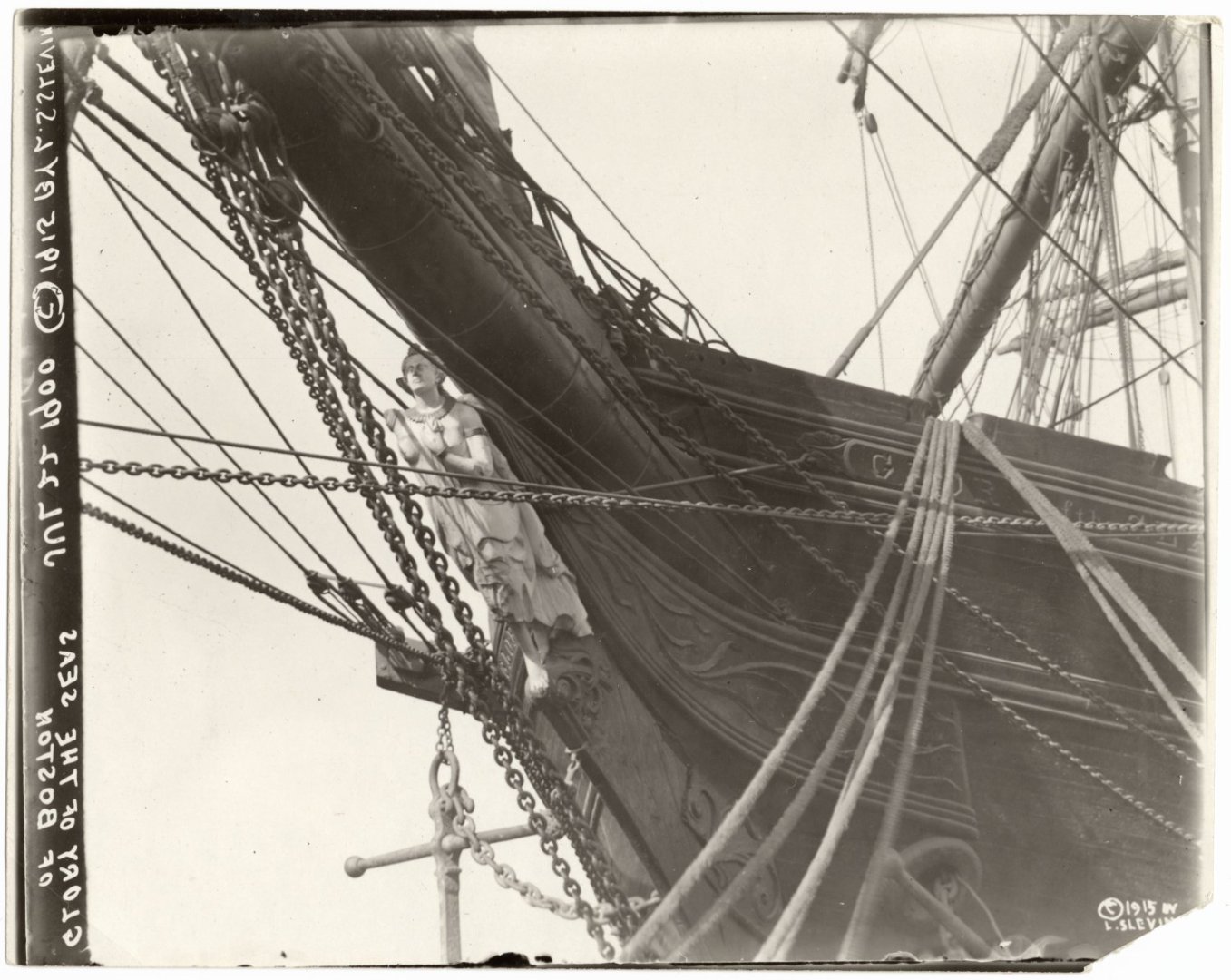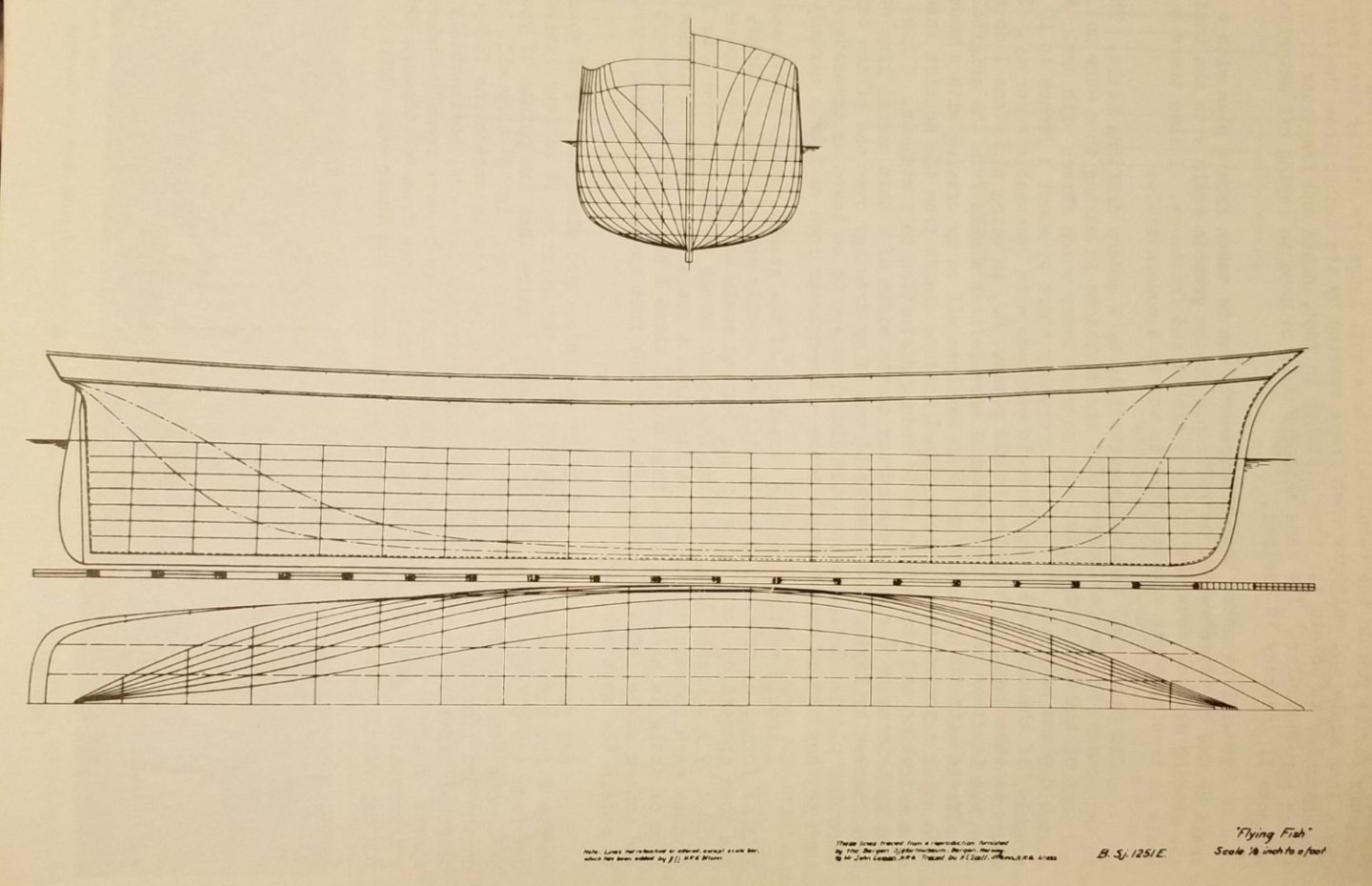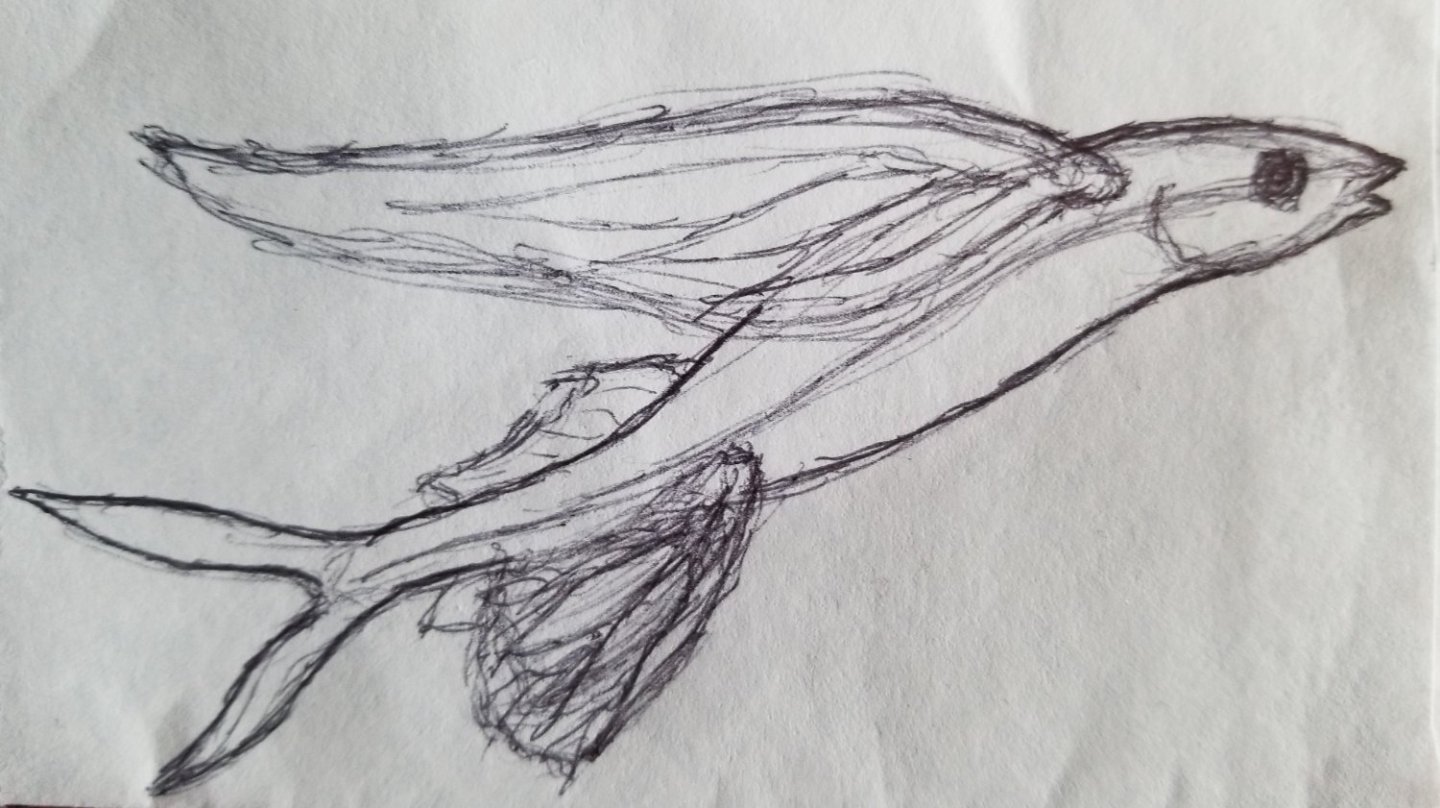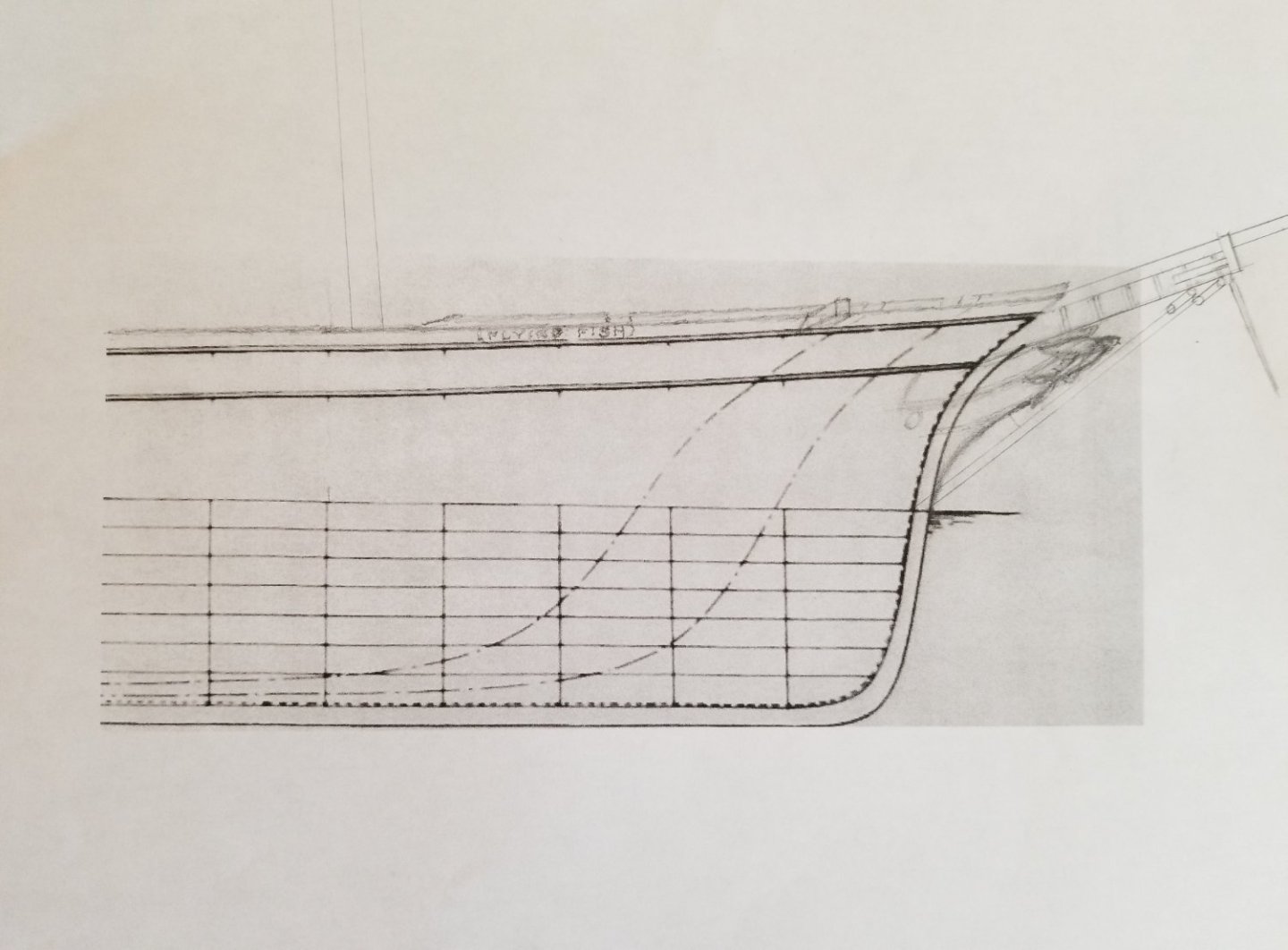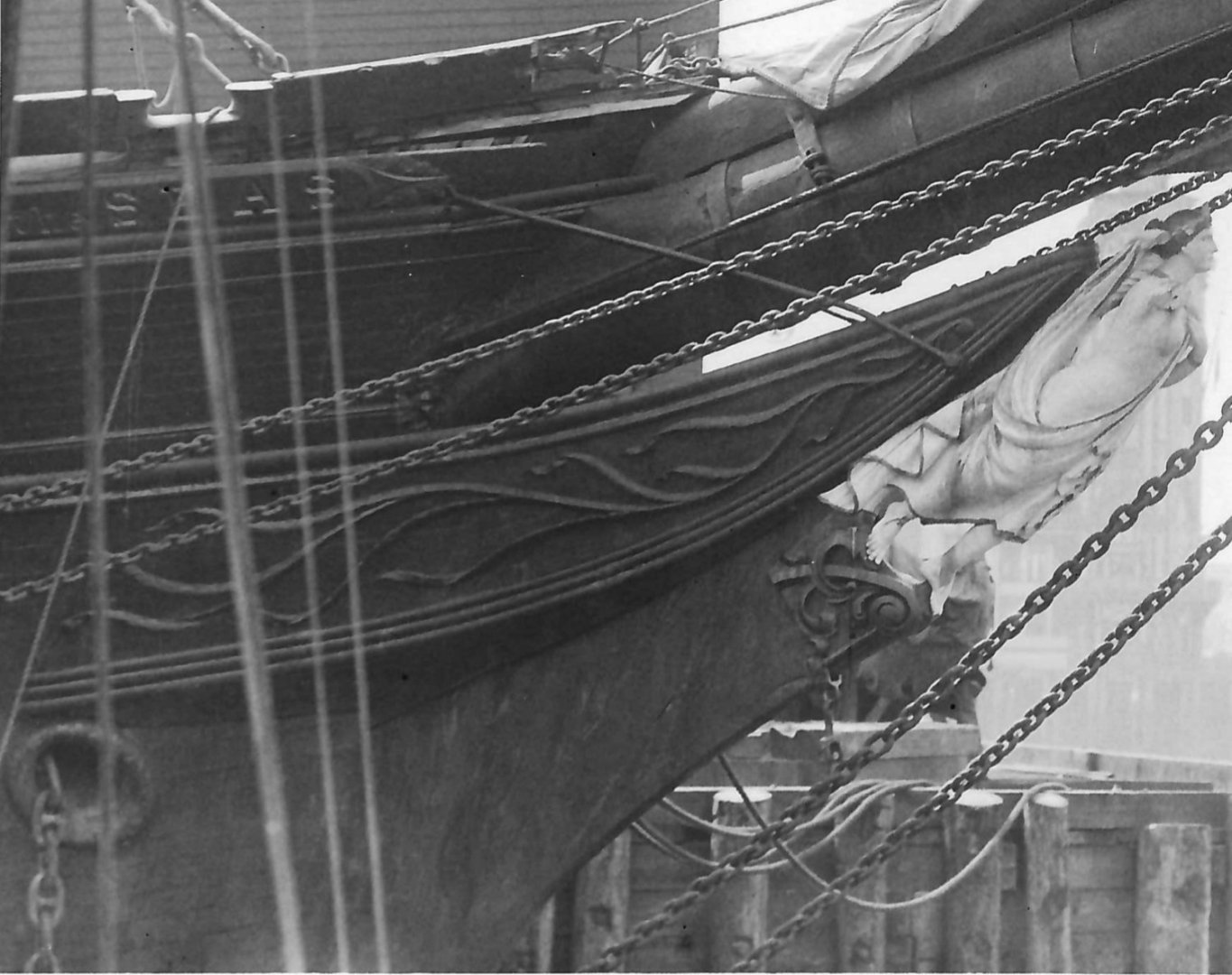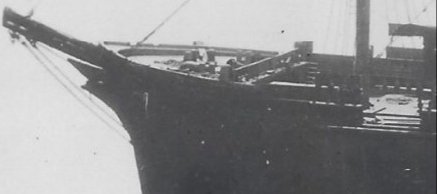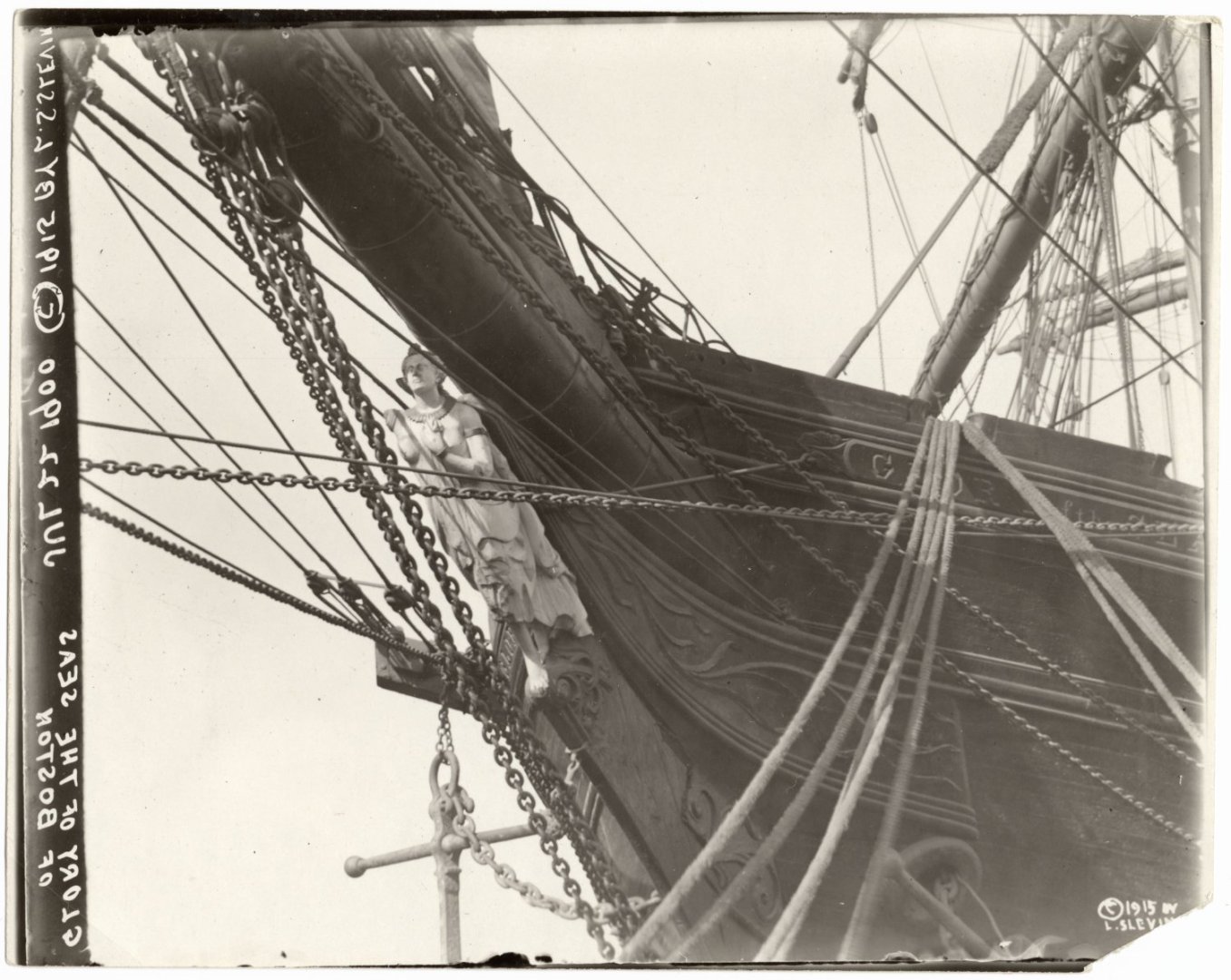-
Posts
2,150 -
Joined
-
Last visited
Content Type
Profiles
Forums
Gallery
Events
Everything posted by ClipperFan
-
Bob Cleek, McKay's original Wheelhouse design had the ship's wheel in a recessed area in front of the wheelhouse. Effectively, the helmsman was still completely exposed to the elements in front. Back wall and two sides about 3' deep were all the protection the original design afforded. When the wheelhouse was extended to the back of the rear companionway, they had the foresight to install 4 large windows in front. Ship's wheel and helmsman's position never changed from the position on the poop deck. Big difference was now the sailor manning the helm was completely protected.
- 3,560 replies
-
- clipper
- hull model
-
(and 2 more)
Tagged with:
-
Rob, that one image is simply amazing! It exceeds expectations. This proves "beyond the shadow of a doubt" that besides the obvious fact that you are indeed a hell of a model shipwright, all of our concerted efforts to correctly reinterpret all facets of McKay's last glorious Clipper have resulted in the most accurate replica conceivable! All I can say is.... wow, just wow!!!! That and it's been an honor and one of the most exciting experiences in my life to collaborate with you, Vlad, Druxey and every other member of this revolutionary enterprise!
- 3,560 replies
-
- clipper
- hull model
-
(and 2 more)
Tagged with:
-
Rob, When we originally discussed submitting a Nautical Research Journal article, I remember discussing submitting a follow up one including completion of your magificent replica. That was pending response for my first submission. However, since the editor sent receipt confirmation that it met their July 1st submission deadline, I've heard nothing since. From their publication calendars, the next issue should be December. I will reach out to see if the editor can let me know if the article might appear then, in a later issue or not at all... Meanwhile, Rob if you want we can collaborate on a 2nd follow up or do a plan for displaying your model in a local museum. As for developing an actual fully illustrated book, nothing would excite me more. Others can correct me if I exaggerate but I honestly can't think of another more thoroughly documented, examined and reconstructed vessel than McKay's Glory of the Seas.
- 3,560 replies
-
- clipper
- hull model
-
(and 2 more)
Tagged with:
-
Rob, I'll never tire of seeing these wonderful overall photos of your breathtakingly magnificent Clipper Ship Glory of the Seas!
- 3,560 replies
-
- clipper
- hull model
-
(and 2 more)
Tagged with:
-
Vladimir & Rob, it's evident from this 1869 fitting out scene, that the rear tip of the lifeboats did rest on the front edge of the rear coach house roof and a boat skid in the forward area. The photo's not defined enough to see it but by viewing the long drooping line at the fore davit, following over to the sternward side, between a sailor seated on the gunnal and another standing to his immediate left, there's a rectangular void interrupting the dark curving shadow under the upside down lifeboat which exactly matches the shape of the boat skid supporting it. Since the spaces between posts were 3 feet, it should be possible to mount lifeboats in between them giving an added advantage of supporting objects with which to lash down boats.
-
Rick310 I echo Rob and Pat's sentiment. Very clean work indeed.
- 342 replies
-
- Flying Fish
- Model Shipways
-
(and 1 more)
Tagged with:
-
Rob, I love the activity you're creating as you continue to populate your replica with additional crew. Maybe this is "pushing the envelope" but since you're already displaying Glory of the Seas in port, I thought it might be a fun moment to add a vintage photographer in the act of recording the ship's boy posing on the boy's house. Here's an actual scene of a photographer of that era, showing what would have been considered "portable" and in use in the late 1870s when that image was taken. You could even pose the ship's carpenter preparing to do the work on the port side of the ship before he crouches down. The idea is to replicate actual events which have been memorialized on film. If your stunning vessel does go on display, this would give potential audiences a fascinating tie in to actual events.
- 3,560 replies
-
- clipper
- hull model
-
(and 2 more)
Tagged with:
-
Rob, kinda like "Gumby" sailors 😉 could have some real interesting possibilities for Halloween!
- 3,560 replies
-
- clipper
- hull model
-
(and 2 more)
Tagged with:
-
Thanks for setting the record straight. By mixing HO & 1:96th scale figures, Rob can give the impression of a variety of crew sizes, just like real life.
- 3,560 replies
-
- clipper
- hull model
-
(and 2 more)
Tagged with:
-
Rob, you learn something every day. I didn't know HO figures were 1:96th scale.
- 3,560 replies
-
- clipper
- hull model
-
(and 2 more)
Tagged with:
-
Roger, from their positions, the few crew I've seen so far are most likely from Revell's 1:96th scale Cutty Sark.
- 3,560 replies
-
- clipper
- hull model
-
(and 2 more)
Tagged with:
-
Rob, displaying interactions of crew is a great idea, as it creates an imaginative narrative for observers to interpret for themselves. The reason why I specifically suggested the fellow sitting out in midair on nothing but rigging is because it's surprisingly eye-catching as well as being demonstrably historically accurate. It made me realize how at home in every area of these magnificent tall ships those fearless individuals really were. Finally I hope you fully populate your superlative vessel with more than just a token handful of crew.
- 3,560 replies
-
- clipper
- hull model
-
(and 2 more)
Tagged with:
-
Rob, Adding sailors to your vessel certainly drives home how massive Glory of the Seas really was. I think it would be neat if you could reproduce positioning of men as seen in the now familiar photos. The captain in his distinctive bowler standing on the roof of the forward cabin and ship's boy perching on the boy's house would be fun. Here's the British Tea Clipper Sir Lancelot with Spindrift in Foochow. Looking closely at the mizzen mast of the ship in the foreground, just below her mizzen royal yard, there's a sailor comfortably sitting out in the air on nothing but rigging doing some kind of repairs. That would be a fascinating scene to replicate too. Have fun!
- 3,560 replies
-
- clipper
- hull model
-
(and 2 more)
Tagged with:
-
http://www.bruzelius.info/Nautica/News/BDA/BDA(1851-11-04).html John, all McKay clipper lines plans I've seen usually only display the stem. Rob and I have come to the conclusion that Donald himself considered this unique hull construction almost like copyright issue. If you want to see the extreme that he went to, just look at the bow of the clipper Lightning which simply leaves this area an open space! My suggesrion is add the cutwater to the stem and overlay the naval hoods just like McKay himself designed. I suspect the reason we haven't seen naval hoods on other clipper ships is due to the very complicated twisting form of these nautical devices. In fact, when Rob did his replication, he used thin metal to represent them. Just remember to thin the naval hoods cutwater to replicate actual scale. Other observations I have about Flying Fish have to do with her figurehead and bowsprit. The link opens up to Duncan MacLean's November 4th, 1851 "Boston Daily Atlas" in-depth description of Flying Fish. Since her bowsprit length from hull to inside of her cap is 18' that means she would have 6 wrought iron bands each 3' apart from the centers of those bands. That leaves 18" from the bow to the 1st band and 18" from the center of the 6th band to the inside of the cap. The inner 18" of the bowsprit isn't round but oblong as it enters the hull. Outboard of the cap, she has a 40' jibboom, divided at 20' and 15' with a 5' end. It too becomes oblong as it enters the ship's hull. In addition, the jibboom gets thinner at the top a short distance before entering the hull. Observing the beautifully clear starboard close up of Glory's bow and figurehead, you can see how we arrived at these figures. Glory's figurehead is documented as being 90". Since Flying Fish was a much smaller vessel, her flying fish figurehead would have been about 7'. Figurehead carving was a very ornate art form, so my sketch reflects that. The head would be positioned looking straight forward while the rest of her body would angle down sharply to accomodate the angle of the bowsprit. Her wings would flare out as if in flight and probably over layed a good portion of the naval hoods. Both Rob and Vladimir had to redo the height of their forecastle bulkheads. That because actual photos of Glory's forecastle revealed a much higher bulkhead. The forecastle deck should actually be mounted on top of the monkey rail molding. Looking the fore of Glory's forecastle shows a lovely curving piece which Rob concluded housed belaying pins. It's not simply a straight piece. You can also see that her splashrail extends nearly to the front of her foremast shrouds. Another rare Glory of the Seas stern photo reveals that her rear coach house curves inward to match the narrowing hull. It's hidden by her enlarged wheelhouse but originally her rear gangway was offset to the port side. Meanwhile, based on a famous JE Buttersworth Flying Fish painting commissioned by her owners, to commemorate her win of "The Great Atlantic-Pacific Sea Derby" it's clear her rear coach house had a more elaborate front fascia than on current plans. There were two large windows, most likely being 3' tall x 30" wide with sculptured moldings and a single sliding door in the center. The recessed areas would have been painted pearl and raised areas white. There are ornately sculpted and carved arch bracket supports at each end for the roof deck overhead. At the fore of the coach house is a thin brass railing which only covers the front of the house and terminates in graceful curves at each end. If you like, I can sketch this out for you.
- 34 replies
-
- Flying Fish
- Model Shipways
-
(and 1 more)
Tagged with:
-
Wawona59 John, here's an actual contemporary photograph of the large American clipper ship Great Admiral. The ornately carved, gilded bow is basically a simple cutwater. There are no naval hoods similar to those on the McKay clippers.
- 34 replies
-
- Flying Fish
- Model Shipways
-
(and 1 more)
Tagged with:
-
Wawona59 John, George K gave a very good clarification. I would add that, unlike trailboards, which are basically attractive decorative pieces, if you look carefully at the prow of Glory of the Seas, you'll see that both naval hoods and cutwater are in fact significant integral components of the hull itself. Rob and I have concluded that these fascinating structures are unique to McKay's vessels. The head on image, you can see how tightly these hoods mount to the hull, then they gracefully blend together to a sharp point, at the same time creating a secure mounting area for the figurehead just below. The cutwater attaches directly to the stem and is neatly sandwiched between the naval hoods. The "Boston Daily Atlas" author Duncan MacLean observed that these rugged components were so durably constructed that if her cutwater was to be washed away, the bow would still be seaworthy. For extreme clipper Flying Fish, I overlayed how the naval hoods and cutwater integrated with the stem using the actual ship's lines copied from McKay's which are used to create modern blueprints. Figurehead carving was a high art in the 1900s, so I sketched a more natural looking fish. Another mystery Rob cleared up for me was the exterior depth of the main bulwarks compared to the interior. Due to the interior height of the waterways, the exterior dimension was a foot shorter than the interior. Since the bulkeads were 4 & 1/2' her exterior would have been 3 & 1/2'. That makes her naval hoods 3'. Then the anchor hawse hole mounts directly below the very base of the hood ends.
- 34 replies
-
- Flying Fish
- Model Shipways
-
(and 1 more)
Tagged with:
-
MikeR, you're welcome, of course. As Rob and Vladimir can easily attest, I might be considered a "gadfly" when it comes to directing modelers to achieve greater accuracy in their creations. My consistent intention is only to offer insight into the true appearance of these incredibly beautiful clipper ships. After two years of intensive evaluations of rare images of McKay's final clipper Glory of the Seas we have concluded that her naval hoods and cutwater arrangement was a unique feature to the McKay bow. Here are a few images to assist you in your attempts to recreate this fascinating feature on your extreme clipper Flying Fish. From these pictures, you can see that the depth of the hood is just slightly smaller than the width of the main bulkead above. We calculated the exterior dimension of Glory's main bulkhead at 4' and width of her naval hood at 3 & 1/2'. Since Flying Fish had a 1/2' smaller main bulkhead, her naval hood would have most likely been 3'. You have correctly reproduced this feature neatly on your model but the end depth to be accurate needs to be wider. Since it's quite difficult to relocate her anchor hawse hole below her hood, how it appears in the Glory of the Seas images, it's probably easier to end the hood just before that opening. I applaud your efforts to reproduce this fascinating McKay feature. On the forecastle above, looking at the close up of Glory's forecastle, you can observe a long graceful curve ending in a wedge shape at the bow, which Rob and I concluded would have housed belaying pins. Ignore the heavy railing at the stern end of the forecastle, as that's not original. However the graceful arching curve of her cutwater in this scene is accurate. Her figurehead has been removed but you can see where she would have been mounted. The flying fish figurehead would have had thin wings, to replicate this feature, you might want to use thin plastic. The figurehead itself was burnished with gold and green. From this limited description it sounds like it was a very lifelike representation. The gold most likely was a delicate filigree on wings and fins, possibly at the edges of the fish's scales as well. Real flying fish are darker above and lighter below and are beautiful creatures.
-
Rob, Johnny the sad reality about the loss of McKay's magnificent final clipper is most likely a combination of factors. Not least of those was apparently irreperable dry rot, most likely caused by carelessness of her later owners which neglected to resurface her waterline with yellow metal. Such benign neglect allowed barnacles and other undesirable sea life to invade her bottom. When the Syndicate of wealthy industrialists learned about the dreadful condition of her hull, they decided to abandon her as being considered unseaworthy to make the treacherous journey around the mighty seas of Cape Horn. Instead they decided to rescue the venerable frigate USS Constitution. Beloved and more critically undefeated "Old Ironsides." Still, if only they could have just bought her outright from the bank and rented the section of beach she was resting on, maybe just maybe the old girl could have been eventually saved too....
- 3,560 replies
-
- clipper
- hull model
-
(and 2 more)
Tagged with:
-
Rob I agree with your compliment of Snug Harbor Johnny's summation. It was pleasant and insightful at the same time. Another observation I have to add reverts back to our initial conversations regarding viewer's perspective, even camera's distortion. In this case, the greater complexities of the human figure combined with those gracefully falling folds of a dress all combine to create dramatically different observations of the same sculpture from varying positions. Viewing the left side of the figurehead, even when the camera's viewpoint is approximately dead center, her feet look disproportionately small. This challenging situation explains why I personally have had "the devils own time" over the past 14 years trying to arrive at an a accurate representation of her. In addition, Rob's astute observation of the curving position of Athena's left outstretched foot is correct. From the sole picture of her proudly mounted at the prow in the famous 1869 PEM - Black scene of Glory of the Seas on the launch ways, we can see her left foot curves comfortably around a lovely, carved and gilded billet head. Apparently when she was removed in the 1920s, nobody had the foresight to preserve this lovely original mounting feature. Placing her stance on a flat surface would of neccesity required a different stance to make her pose believable. Same goes for her oddly out of proportion right arm. Again the same photo shows a gracefully sculpted right arm naturally reaching back, comfortably grasping her long flowing garb behind her. Unfortunately now, that same right arm looks like she's been working out more than with her left. Notwithstanding, I am still completely blown away with the serene naturalness of Athena, even with these numerous flaws. I get the impression that Elizabeth Le Forgue who modeled for her, besides being a beauty, must also have been one hell of a woman. Thank God her Athena figurehead was spared. Still, I can't help wishing McKay's final masterpiece itself somehow could have been saved as well. What a colossal loss to America and humanity....
- 3,560 replies
-
- clipper
- hull model
-
(and 2 more)
Tagged with:
-
Druxey, Agreed. Rob too has identified that, besides obvious gouges out of her left dress, at one point the figurehead's entire left lower leg was missing, in addition to her missing right arm and some minor damage to her left elbow. It's amazing how different relatively, indistinguishable flat folds appear on her dress in the port image where she's still mounted in place. Compare that to the more refined gracefully falling triple curves of the left side on the restored figurehead. It's like they're two different carvings. However, knowing the sterling reputation of the new curators, it's improbable that this isn't the original.
- 3,560 replies
-
- clipper
- hull model
-
(and 2 more)
Tagged with:
-
Druxey, this is most definitely the original Grecian Goddess 'Athena' figurehead from the McKay clipper. The left wrist and breast gap, as well as noticably different folds, I attribute to the finer photography done with these images. Keep in mind, we've only seen mostly low rez pictures of the restored figurehead after having years of layers of paint removed. The scenes of her still mounted in place include those multiple layers of years of paint overlay, which ultimately blur finer details of her clearly delicate carving.
- 3,560 replies
-
- clipper
- hull model
-
(and 2 more)
Tagged with:
-
Rob, Agreed. I have to arrange for my family's time off from work and find a local motel. It's over 3 hour's drive, one way. I already shared the idea with my wife and she knows, from my decades old obsession with all things surrounding Glory of the Seas, how important this is to me.
- 3,560 replies
-
- clipper
- hull model
-
(and 2 more)
Tagged with:
About us
Modelshipworld - Advancing Ship Modeling through Research
SSL Secured
Your security is important for us so this Website is SSL-Secured
NRG Mailing Address
Nautical Research Guild
237 South Lincoln Street
Westmont IL, 60559-1917
Model Ship World ® and the MSW logo are Registered Trademarks, and belong to the Nautical Research Guild (United States Patent and Trademark Office: No. 6,929,264 & No. 6,929,274, registered Dec. 20, 2022)
Helpful Links
About the NRG
If you enjoy building ship models that are historically accurate as well as beautiful, then The Nautical Research Guild (NRG) is just right for you.
The Guild is a non-profit educational organization whose mission is to “Advance Ship Modeling Through Research”. We provide support to our members in their efforts to raise the quality of their model ships.
The Nautical Research Guild has published our world-renowned quarterly magazine, The Nautical Research Journal, since 1955. The pages of the Journal are full of articles by accomplished ship modelers who show you how they create those exquisite details on their models, and by maritime historians who show you the correct details to build. The Journal is available in both print and digital editions. Go to the NRG web site (www.thenrg.org) to download a complimentary digital copy of the Journal. The NRG also publishes plan sets, books and compilations of back issues of the Journal and the former Ships in Scale and Model Ship Builder magazines.

